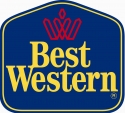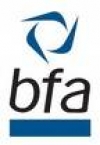Posted by: Admin Post on November 6, 2009
Author: Matthew Boyle
Stuart Frankel isn't what you'd call a power player in the world of franchising. Five years ago he owned two small Subway sandwich shops at either end of Miami's Jackson Memorial Hospital. After noticing that sales sagged on weekends, he came up with an idea: He would offer every footlong sandwich (the chain also sells 6-inch versions) on Saturday and Sunday for $5, about a buck less than the usual price. "I like round numbers," says Frankel, a brusque New Yorker who moved to Miami in 1972 and owned a drugstore before opening his first Subway outlet in 1988.
Customers liked his round number, too. Instead of dealing with idle employees and weak sales, Frankel suddenly had lines out the door. Sales rose by double digits. Nobody, least of all Frankel, knew it at the time, but he had stumbled on a concept that has unexpectedly morphed from a short-term gimmick into a national phenomenon that has turbocharged Subway's performance. "There are only a few times when a chain has been able to scramble up the whole industry, and this is one of them," says Jeffrey T. Davis, president of restaurant consultancy Sandelman & Associates. "It's huge."
In fact, the $3.8 billion in sales generated nationwide by the $5 footlong alone placed it among the top 10 fast-food brands in the U.S. for the year ended in August, according to NPD Group. That puts the $5 menu's success just a notch behind KFC (YUM) and ahead of Arby's and Domino's Pizza (DPZ). It helped privately held Subway, of Milford, Conn., lift U.S. sales 17% last year at a time when most restaurant chains, save for industry leader McDonald's (MCD), struggled. Actually, make that soon-to-be-former industry leader McDonald's. Subway's low-cost franchising model and mainstream appeal have allowed it to add 9,500 locations in the past five years, for a total of about 32,000 outlets. At its current growth rate of 40 new stores a week, Subway is poised to surpass McDonald's in worldwide locations sometime early next year. (Measured by total sales, McDonald's $30 billion still dwarfs Subway's $9.6 billion, although Subway has now supplanted both Wendy's (WEN) and Burger King (BKC) in market share.)
"A LIFE OF ITS OWN"
Frankel's $5 footlong idea illustrates how a huge company can wake up and eventually seize on a good idea that's not generated at headquarters. Frankel, along with two other local managers in economically ravaged South Florida, ceaselessly championed the idea to Subway's corporate leadership amid widespread skepticism. Once it was approved, Subway's marketing team quickly generated a memorable campaign that firmly established the $5 footlong nationwide. The promotion's success spawned imitators and created an unprecedented demand for staple ingredients such as turkey, ham, and tuna. "The whole thing took on a life of its own," says Jeff Moody, CEO of Subway's franchise-owned advertising arm, the Subway Franchisee Advertising Fund Trust.
The fact that a sandwich, the quintessential American food, has grabbed the spotlight right now comes as no surprise to some. Its appeal goes beyond the low sticker price—you can share a footlong with a co-worker or a friend (something that's not quite as easy with a Big Mac). "People are not eating out as much anymore, so anything that brings people together through food is much more compelling nowadays," says Michelle Barry of the Hartman Group, a Seattle consultancy that employs anthropologists and sociologists to ferret out consumer perceptions for such companies as Kraft Foods (KFT) and Wal-Mart Stores (WMT).
For Frankel, the biggest surprise from his $5 promotion was that his profit margins didn't decline. Many promotions are so-called loss leaders designed to draw customers in the hope they'll buy higher-margin items alongside the featured special. That's one reason most offers have a time limit. Frankel's food costs did rise as a percentage of sales, but that was offset by the overall boost in volume and the increased productivity of his employees, who had less down time. Even after adding two new staffers, Frankel made money on each $5 sandwich.
Frankel kept the weekend promotion going for more than a year. At the same time, Subway's top brass was growing tired of a national ad campaign that featured spokesman Jared Fogle, who had lost 245 pounds almost a decade earlier by eating Subway six-inch subs for lunch and dinner. Company insiders envied the success of McDonald's dollar menu and wanted a "value" offering of their own. In September 2007, Steve Sager, a Subway development agent who oversaw about 225 franchises across South Florida, heard about the success of Frankel's $5 deal. He decided to try it in a troubled Fort Lauderdale outlet on Commercial Boulevard, a gritty thoroughfare dotted with strip malls. On the first day of the promotion, the store nearly ran out of bread and meat. Sales doubled.
Sager called Subway co-founder Fred DeLuca, who lives in the vicinity, and excitedly shared the news. An intrigued DeLuca came by the shop and, Sager says, "saw the potential instantly." (DeLuca declined to comment.) Charlie Serabian, the owner of 50 South Florida Subways, decided to launch the promotion in some of his stores. To advertise, he slapped crude homemade signs in the windows that spelled out "ALL FOOTLONGS $5." DeLuca joked that they looked like ransom letters. It didn't matter: Sales rose as much as 35%. Some locations, such as those housed inside Wal-Mart stores, did even better.
Moody, the marketing chief, hopped a flight to Fort Lauderdale a month later. He arrived at one store at 11 a.m. to find a line out the door. Frankel and Sager, who accompanied him, jumped behind the counter to help make sandwiches, while Moody talked to customers. Most were buying footlongs, and some were saving half for later.
Clearly, the South Florida crew was onto something. The question was whether it would resonate elsewhere. "Unless it was in your store, you were skeptical," Moody says. At a meeting of the franchisee marketing board that fall, Frankel presented his idea. Many owners thought the promotion would send food and labor costs soaring, erasing any hope of profits. A motion to roll it out nationally failed.
ANNOYING JINGLE
But others picked up on Frankel's idea and tried it in locations ranging from Washington to Chicago. Right before Christmas 2008, the board voted again, and the motion passed. (Franchisees still had the option to not do it.) Moody pushed ahead with a national campaign, despite having no market research to back up the idea. "It violated all our normal processes," says Moody, whose annual ad budget is around $500 million.
Subway soon brought in its ad agency, MMB of Boston. "Let's not overcomplicate this," MMB managing partner Chad Caufield recalls thinking. The idea was to use hand gestures and an irritatingly addictive jingle to convey both the price (five fingers) and the product (hands spread about a foot apart). MMB also shot on a soundstage, giving the commercial a stylized, campy look. "We wanted to create the feeling that this was a movement taking hold," Caufield says.
The campaign was launched on Mar. 23, 2008—the same month that Bear Stearns collapsed into the arms of JPMorgan Chase (JPM). "The timing could not have been better," says Dennis Lombardi, executive vice-president at restaurant consultancy WD Partners. Over the first two weeks, franchisees reported that sales shot up 25% on average. Within weeks, 3,600 videos of people performing the jingle appeared on YouTube (GOOG). Fogle, attending the NCAA Final Four college basketball tournament soon after the launch, was serenaded with the song by students. The $5 footlong was mentioned on ESPN, The Tonight Show, and celebrity gossip site TMZ (TWX). The North Carolina State Fair even held a $5 Footlong Song Challenge—an American Idol-style event for the 4-H crowd.
The franchisee marketing board quickly voted to extend the four-week promotion to seven weeks. When that ended, Subway kept it going but limited the number of $5 sandwiches to just eight, removing items with high ingredient costs, such as the Chicken & Bacon Ranch sandwich.
Suddenly Subway needed 50% more food supplies. Bread shortages became a problem, as the ratio of six-inch sandwiches to footlong orders, normally 2 to 1, flipped. Subway's franchise-owned Independent Purchasing Cooperative, or IPC, had to scramble to find new sources of bread. Even mundane items, such as plastic sandwich bags from China, nearly ran out. "I was in a panic," recalls IPC CEO Jan Risi, who furiously worked the phones, cajoling her network of suppliers to run extra shifts.
EVEN CHEAPER
Soon, copycat offers emerged. Boston Market offered 11 meals for $5 each, while Domino's sold sandwiches for $4.99 and KFC launched $5 combo meals. T.G.I. Friday's began selling $5 sandwiches. "Five dollars is the magic number now," says restaurant consultant Malcolm Knapp. "It's become a price point that consumers respond to," says Judy Cantrell, Boston Market's chief brand officer.
The question now is when the campaign will run out of steam. MMB's Caufield admits the issue keeps him up at night: "Are we riding this pony too long?" Tony Pace, a senior executive who works with Subway's marketing arm, replies bluntly: "If you had a brand that represented nearly $4 billion in sales, would you plan an exit strategy for it?"
Pace says the footlong will remain "as long as it makes good economic sense," so a decline in footlong sales could force price hikes, or limits such as $5 after 4 p.m. (Serabian has gone the other way as the South Florida economy has worsened, offering footlongs for $4 in his stores.) There are also concerns that Subway's focus on the footlong could distract it from new growth areas, such as a planned push into breakfast items or international expansion. (Save for some tests in Australia and Canada, the $5 footlong hasn't gone beyond the U.S.)
Meanwhile, Frankel has moved on to a new idea. Now he's pushing for Subway loyalty cards that let purchasers accrue points toward free sandwiches. Driving down Interstate 95 toward Jackson Memorial on a cloudy autumn day, Frankel chronicles the frustrations he's had convincing DeLuca and others that this could be a hit. Maybe now that Frankel is the Father of the $5 Footlong, they'll listen.
Matthew Boyle is deputy Corporations editor for BusinessWeek.
Source: BusinessWeek








